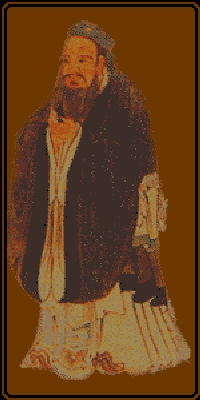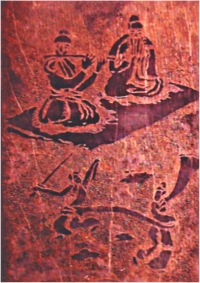|

Confucius was born in year 21 of the reign of King Ling of the Zhou dynasty (year 22 of the period of Duke Xiang of the Lu State, 551 B.C.E.) and when he was 73, died in year 40 of the reign of King Dun of Zhou (year 16 of the period of Duke Ai of Lu, 479 B.C.E.).
In year 2 of the reign of the emperor Ming of the Han dynasty ( 59 C .E.), the ceremony of worshiping Confucius was held in state-run schools in the capital and counties instead of in the Confucian Temple in Qu Fu.
From then on, this kind of ceremony was held in schools in the seats of central government and local governments. The ceremony of worshiping Confucius thus became an important event throughout the country.  According to the ritual rule, the Dance of Eight Rows of Eight could only be performed in the emperor's Temple . In the Tang dynasty, Confucius was conferred the title ¡§Wen Xian Wang¡¨ (literally, ¡§King of Culture Development¡¨). He was seated facing the south and worshiped as if he were a king.
He was esteemed as the Greatest Exemplar of Teacher for All Ages, who was well-versed in both ancient and contemporary learnings and whose virtue was as great as Heaven and Earth. He was the utmost sage that surpassed any other sages.
From that time onwards up to year 32 of the period of Guang Xu of Qing, it was decreed that the Dance of Eight Rows of Eight be performed as a part of the grand ceremony of worshiping Confucius. |




